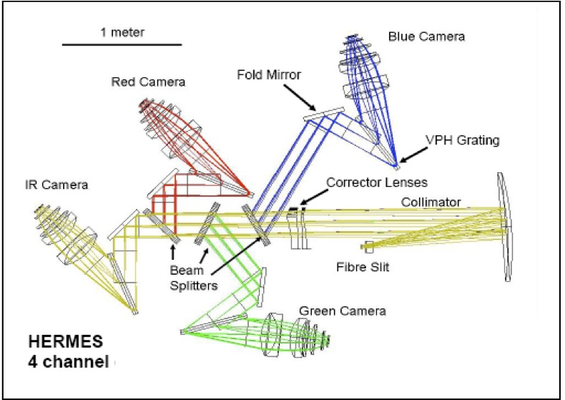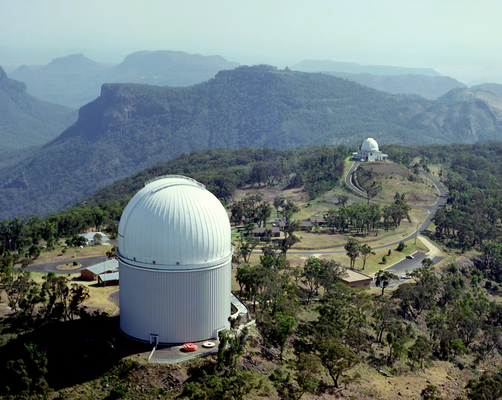HERMES: A High Efficiency and Resolution Multi-Element Spectrograph
HERMES is a new high resolution fibre-fed multi-object spectrometer. It has four non-contiguous spectral bands, covering a total of approximately 100 nm between about 470 nm and 790 nm. These bands were selected to permit the measurement of the abundances of as many elements as possible from the major nucleosynthetic processes.
| Band | λmin (nm) | λmax (nm) |
|---|---|---|
| Blue | 471.8 | 490.3 |
| Green | 564.9 | 587.3 |
| Red | 648.1 | 673.9 |
| IR | 759.0 | 789.0 |
HERMES also has two resolution modes, 28,000 and 50,000. The high resolution mode is achieved using a mask and results in 50% light loss. The instrument has a single collimator and four VPH gratings and cameras, with the bands separated by dichroic beam splitters. Each camera has a 4x4K E2V CCD detector.
HERMES utilizes the existing 2-degree field (2dF) positioner. This allows for up to 392 simultanaeous spectra of objects anywhere within a two degree diameter on the sky. Each fiber has a diameter of 2.1 arcsec. 2dF also has a wide-field corrector, an atmospheric dispersion compensator, and a robot gantry, which positions optical fibers to 0.3 arcseconds on the sky. It is also able to configure a field while observing another one.
The GALAH Survey is the primary science driver for the HERMES instrument. For more information about HERMES, please see the AAO HERMES site, Barden et al. (2010), or Heijmans et al. (2012).

|
Anglo-Australian Telescope
The Anglo-Australian Telescope (AAT) is a 4 meter equatorially-mounted telescope. It is located at Siding Spring Observatory in New South Wales, Australia and run and maintained by the Australian Astronomical Observatory.

|